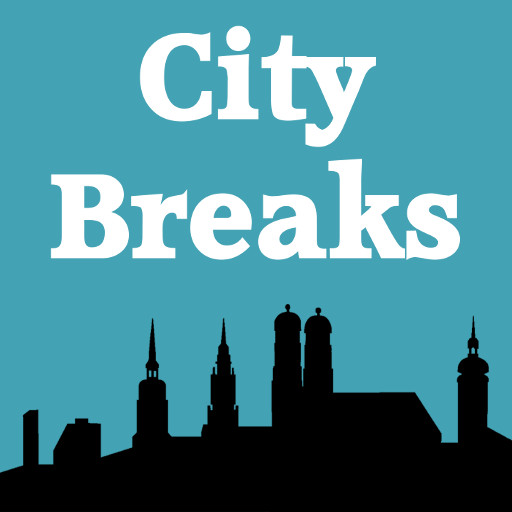This post on Anne Frank and Amsterdam in World War II looks at how 5 years of German occupation affected everyone living there and suggests places to visit to find out more. We start with the population in general and the Dutch Resistance Museum, then look at the plight of the city’s Jewish population, finishing with a section on Anne Frank: her story and the museum now operating in the building where she lived in hiding for 25 months. As ever, there is much more detail on the podcast.
World War II in Amsterdam


The Netherlands hoped to stay neutral in World War II, but were invaded by the Nazis on 10th May 1940. After Rotterdam was badly bombed, the Dutch commander General Winkelman announced that ‘In order to spare the civil population and to prevent further bloodshed I feel myself justified in ordering all troops concerned to suspend operations’. Five years of occupation followed until the liberation in May 1945. The Netherlands had the highest per capita death rate of all Nazi-occupied countries in Western Europe. More than 200,000 Dutch men, women and children had died, 107,000 of them Holocaust victims.
The Dutch historian Loe de Jong wrote that ‘most people, however anti-German their feelings, tried to protect themselves, their families and their property, adapting themselves to the increasingly difficult circumstances of daily life.’ However, some joined the Dutch Resistance, whose activities included producing forged ration cards and counterfeit money, collecting intelligence, publishing underground newspapers, sabotage of phone lines and railways and helping Jews to escape or go into hiding. Others chose or were forced to collaborate with the German regime, sometimes joining the German armed forces, supplying the Germans with information or goods or even betraying Jews who had gone into hiding or delivering them to the German for a price.
The Dutch Resistance Museum


‘Discover the Verzetsmuseum (Dutch Resistance Museum) in the heart of Amsterdam and step back in time to the era of war, dictatorship, persecution and resistance. Here you will uncover the impressive history behind the difficult choices that the Dutch had to make during the dark days of the German occupation in the Second World War.’ At this museum you are taken on a chronological journey through the story of the war through films, exhibits, photographs and documents, many of which focus on the personal stories of Amsterdammers from the era.
There are stories from daily life, such as the dilemma faced by the 19-year-old student Wim Dekker who worried about the effect on his Jewish friends if he agreed to sign the Aryan Declaration, asserting that he had no Jewish ancestry. He recognised this move as preparing the way for anti-semite persecution. Eleven-year-old Franz Niewenhuis and his brother were evacuated to Friesland during the Hunger Winter of 1944-5, as were 40,000 others. You will also learn about collaborators who gave the Germans information and, in the case of Wim Heinnecke, worked as a ‘Jew Hunter’, accepting payment for each person he handed to the Germans.
And there are many stories of Resistants: those who ran underground newspapers, Piet Landweer, a government administrator who helped Jews gain false ID cards, those who hid Jewish families, Erik Hazelhoff Roelfzema who escaped to England and joined the RAF, Fernanda Kapteijn who was a bicycle courier delivering underground messages, Pastor Henri Villings who announced from his pulpit: ‘There’s nothing more our soldiers can do. Now it’s our turn. We will thwart the Germans wherever we can.’
Amsterdam’s Wartime Jews


The persecution of Amsterdam’s Jews began in 1941 when they were barred from many professions, expelled from schools and banned from many public places including parks, theatres, swimming pools and markets. By 1942 they were forced to wear the yellow star, subjected to an overnight curfew and forbidden to use the city’s public transport. Then the arrests and round-ups began and many were sent to the concentration camps. Of the 80,000 Jews living in Amsterdam just before the war, only 5,000 were still alive at the liberation of the city in 1945.
The historian Geert Mak included this description by a woman visiting her Jewish parents of the fear and horror in which all Jews in Amsterdam during this period were forced to live. ‘Mother told how she sat in the dark in front of the window every evening while people were dragged away like animals, shivering with apprehension because it could be her and father’s turn at any moment; how large trucks brought in for the raids had waited there, loaded with people whimpering or shouting out loud with fear, of whom only a hopeless tangle of arms and legs had been visible.’
Two places to visit


The Hollandsche Schouwburg is a former theatre, the place where many of the city’s Jews were first held after their arrest. Today it is a memorial site. Across the road was a creche where Resistance workers risked their lives to spirit Jewish children away to safety. On its website, one former worker recalls that: The day care centre was less tightly guarded than the Schouwburg. Even the door was left unguarded from time to time. This made it possible to smuggle children from the building. Babies and toddlers were carried out by the child minders in bags, boxes, suitcases or even rubbish bins. Children were also smuggled out while going on group walks outside the centre.
The nearby National Holocaust Museum, opened in 2024, tells the story of all those persecuted during this dreadful time – Jews, Roma and Sinti people, gays – through objects, photos and films, audio recordings and documents.
anne frank


At the Anne Frank Museum on Prinsengracht you can learn the story of the Jewish Frank family who hid here in the annexe behind Otto Frank’s business premises for 25 months until they were betrayed and sent to the concentration camps. Anne, her sister Margot and their mother all died there and when Otto Frank returned after the war, one of those who had helped the family live in secret told him she had found Anne’s diary and saved it for him. Anne was just 13 when she began the diary, but after her writing was published it became the world’s best-known testament to the horror suffered by persecuted Jews during World War II.
Book your visit well in advance or you risk not being able to go. At the museum, you pass first through a video room and an exhibition to learn the story of the Frank family. Then you pass through the hidden door, disguised as a bookcase, to visit the secret flat where 8 people – the Franks, another family of 3 and a Jewish dentist – lived in secret for 25 months, unbeknown to the workers in the business at the front of the building. It’s a sobering experience.
Reading Anne’s diary before you visit will help you understand much more of what you are seeing. Here are just 4 short extracts.
‘Writing in a diary is a really strange experience for someone like me. Not only because I’ve never written anything before, but also because it seems to me that later on neither I nor anyone else will be interested in the musings of a thirteen-year-old school girl. Oh well, it doesn’t matter. I feel like writing.’
‘Daddy began to talk of us going into hiding. I asked him why on earth he was beginning to talk of that already. ‘Yes, Anne’ he said, ‘you know that we have been taking food, clothes, furniture to other people for more than a year now. We don’t want our belongings to be seized by the Germans and we certainly don’t want to fall into their clutches ourselves. So, we shall disappear of our own accord and not wait until they come and fetch us.’
‘Countless friends and acquaintances have gone to a terrible fate. Evening after evening the green and grey army lorries trundle past. The Germans ring at every front door to inquire if there are any Jews living in the house. If there are, then the whole family has to go at once. If they don’t find any, they go on to the next house. No-one has a chance of evading them unless they go into hiding.’
‘Footsteps in the house, in the private office, kitchen, then … on our staircase. No one breathed audibly now, footsteps on our staircase, then a rattling of the swinging bookcase. This moment is indescribable. ‘Now we are lost’, I said and could see us all being taken away by the Gestapo that very night. Twice, they rattled the bookcase, then there was nothing, the footsteps withdrew, we were saved so far. A shiver seemed to pass from one to another. I heard someone’s teeth chattering, no one said a word.’
never forget


Wandering through Amsterdam today, it can be easy to forget the hardship and terror of the war years. A booklet called Persecution and Resistance in Amsterdam (available from the Dutch Resistance Museum) describes a walk through the city past 35 monuments and significant places from the World War II era. Part of its introduction reads like this:
‘In 1940 the residents of Amsterdam had to get used to marching soldiers, the blackout rules and press censorship. From 1941 onwards the atmosphere became even more grim. The city’s large Jewish population was gradually excluded from public life and eventually deported to concentration camps. Nearly all of them were murdered there. Cars disappeared from the streets. Food and fuel became scarce. In 1944/5 the long, cold Hunger Winter followed. In a mass hunt for heating, trees were chopped down in the streets and windows and doors were ripped from the homes of deported Jews.’
Listen to the podcast
reading suggestions
The Dutch Resistance 1940-1945 by Klaas Kastlein and Michael Wenting
The Diary of a Young Girl by Anne Frank
links for this post
The Dutch Resistance Museum
National Holocaust Museum
Hollandsche Schouwburg
Anne Frank House
Previous Episode Jewish Amsterdam
Next Episode Rembrandt, Vermeer and the Rijksmuseum
Last Updated on June 25, 2025 by Marian Jones





